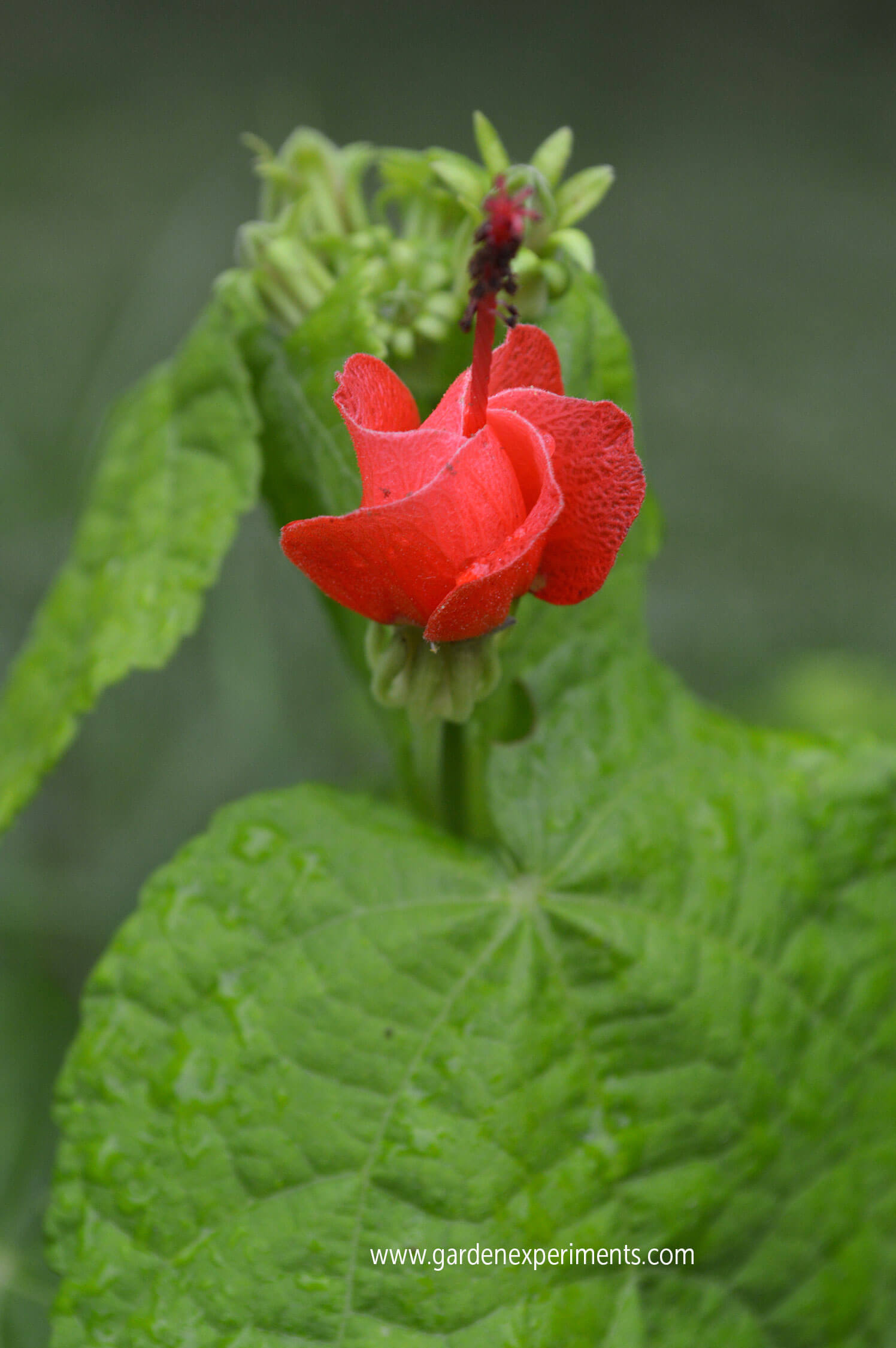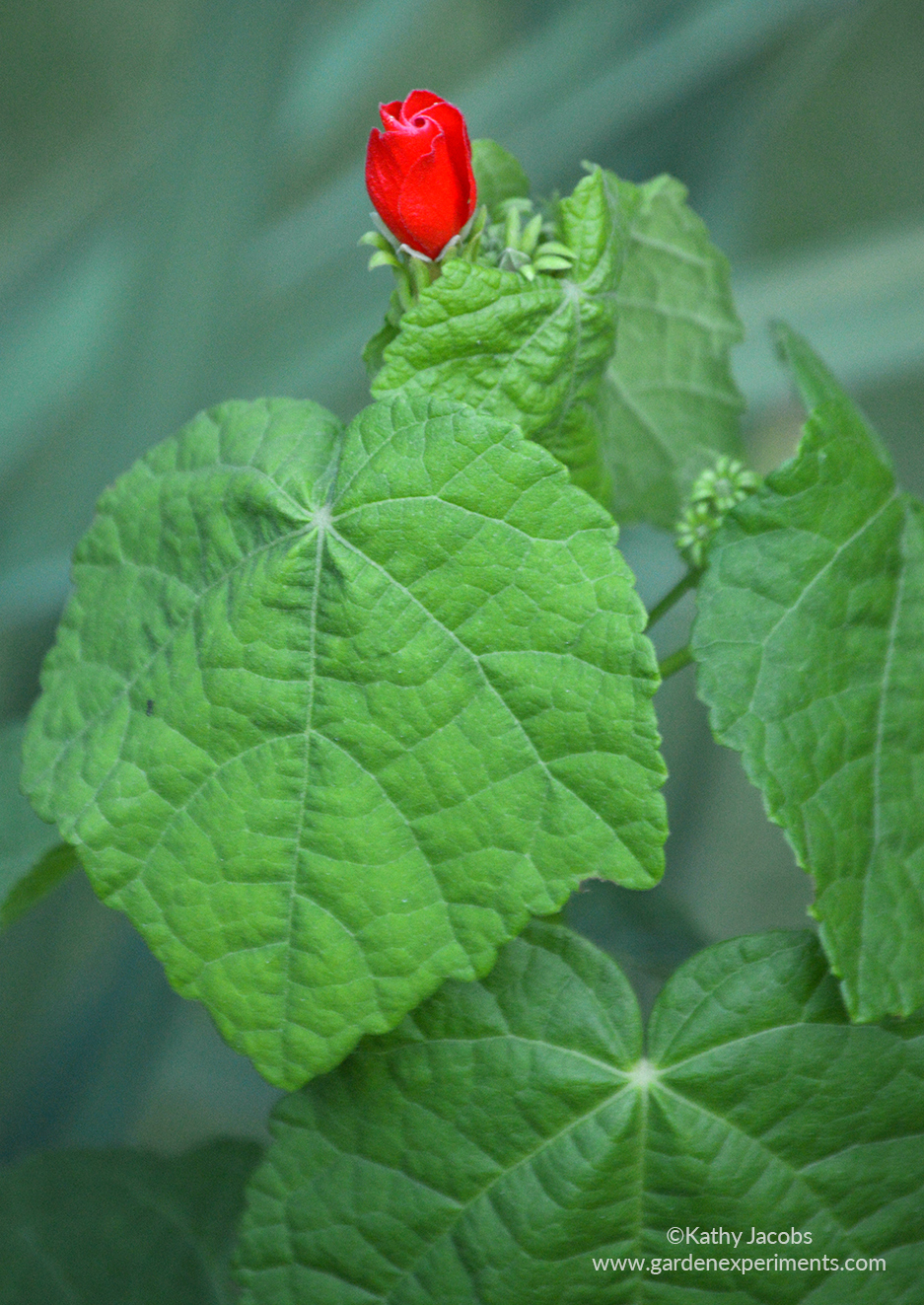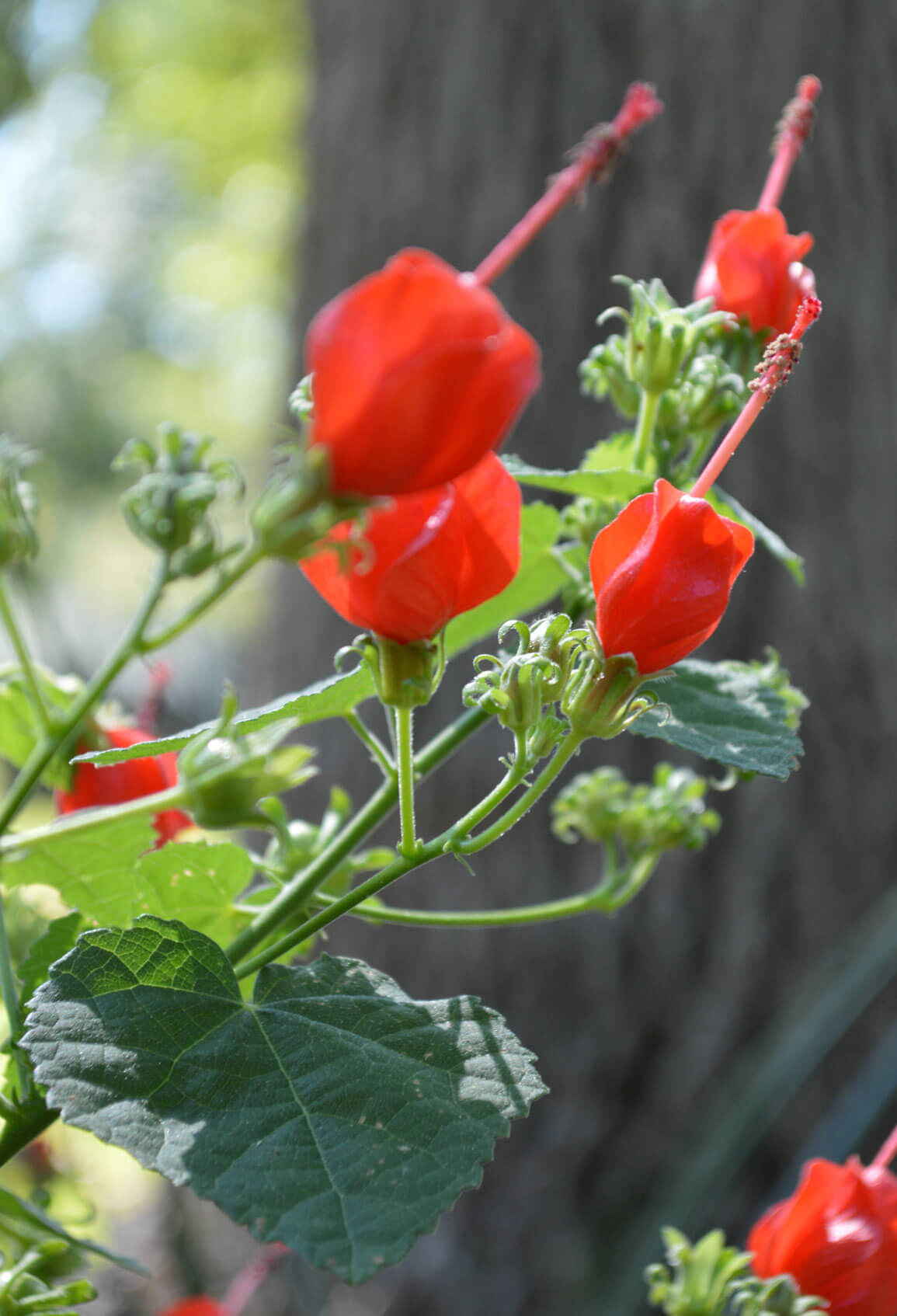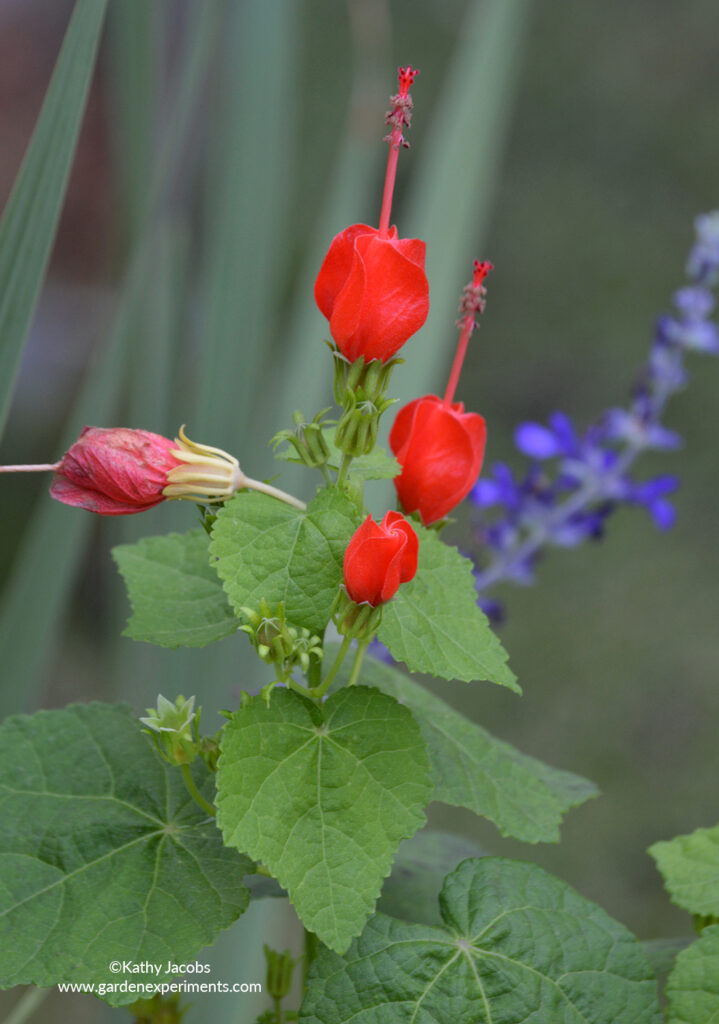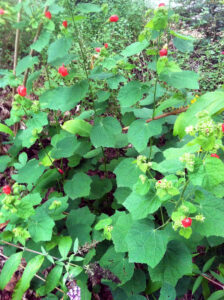This native plant has the coolest little red flowers that hummingbirds love. And they bloom in fall!
Turk’s Cap (Malvaviscus arboreus) is native to the southern United States. It’s hardy in USDA zones 7 through 11. It grows in both sun and part-shade, but plant it in more sun for the best flowers.
It is a perennial, deciduous, shrub-like plant that produces small (2-3 inch) red flowers. When you examine the flowers up close, they resemble a closed-up hibiscus flower. You may also find pink and white flowered cultivars of this plant.
This drought-tolerant shrub thrives in well-drained soils and can endure a range of growing conditions. It is highly attractive to pollinators like hummingbirds and butterflies, offering a reliable source of nectar, while also providing habitat benefits to various wildlife.
This plant is in the Malvaceae family; Turk’s cap is also commonly known as wax mallow, Texas mallow, manzanilla, and sleeping hibiscus, among other common names.
Wildlife Value
This plant flowers in the summer and fall (from May to November) and the flowers attract hummingbirds, butterflies, bees, and other insects. Clouded sulphur butterflies flock to the Turk’s cap flowers in my garden
The flowers turn into small red fruits that small mammals and birds feed upon. Turk’s cap is deer resistant.
This plant is a host for the caterpillar of the Turk’s cap white skipper butterfly.
Plant Name
The common name Turk’s cap comes from the appearance of the flowers. They are thought to resemble a Turkish hat called a fez (think the red hats worn by Shriner’s).
How to Grow Turk’s Cap
Turk’s cap is drought tolerant, quite hardy, and very adaptable. It can be grown in a variety of soils, including moist soils, and anywhere from full shade to full sun. However, plants grown in full sun might show puckered or quilted leaves and plants may be smaller.
In excellent conditions, this plant might grow as tall as 9 feet, but generally, it will be around 2-5 feet. If it grows very tall, you may need to prune it back to get a more suitable height. The plant may grow up to 4 feet wide.
Once established, it has a low requirement for water. It is hardy in USDA zones 7 to 10.
Interestingly, research in Texas has shown that this native plant has a natural resistance to Roundup.
How to Propagate Turk’s Cap
Turk’s cap can be grown from seed, from root cuttings, or from cuttings. If planting seeds, do so after the last danger of frost, covering them only lightly. Roots can be separated in early spring. Water well after transplanting.
Cuttings should be about 4-6 inches in length with the bottom few inches stripped of leaves. Treat the cutting with root hormone and place in soil. Water well.
